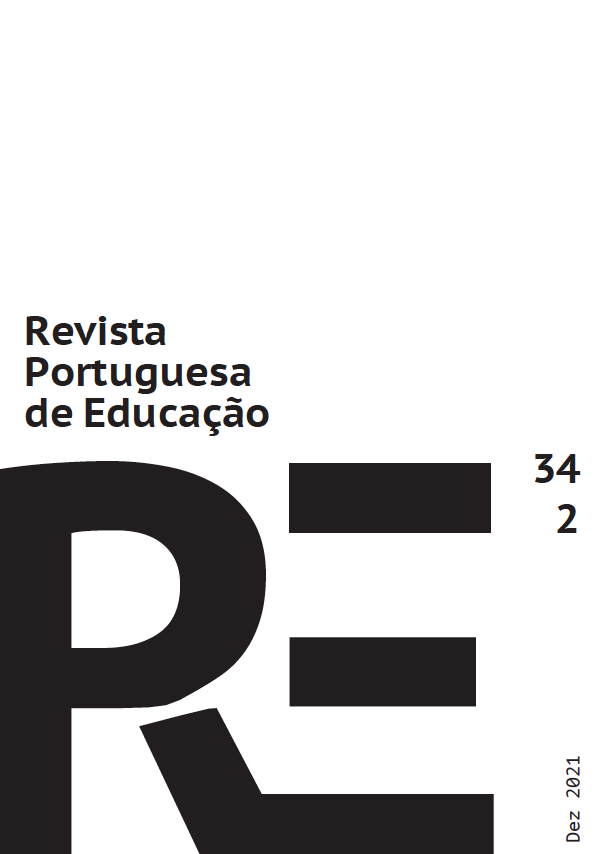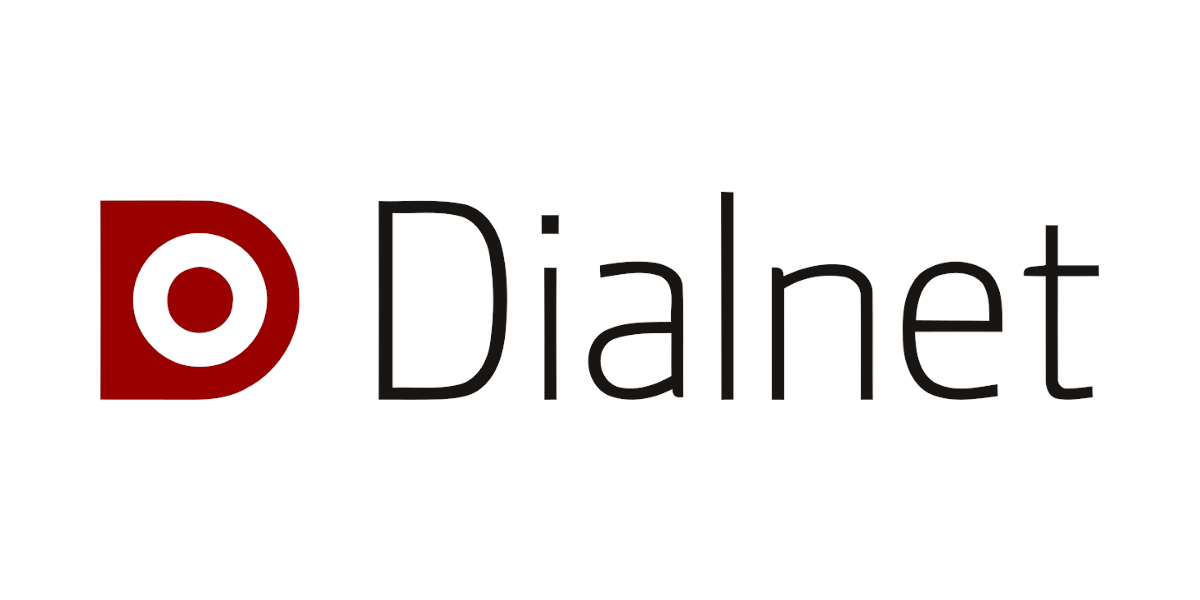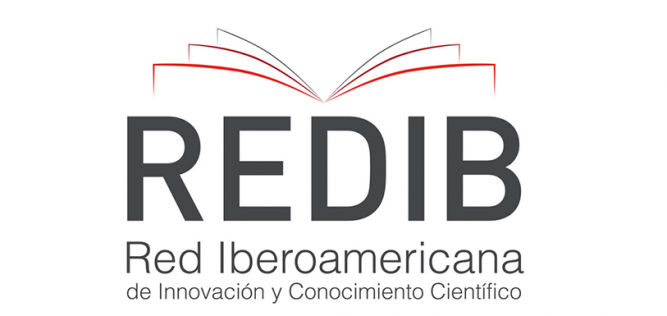La coexistencia entre el aprendizaje en línea y presencial en el proceso de formación de los estudiantes: Un estudio de investigación-acción sobre la operacionalización del “Aula invertida” en la educación secundaria portuguesa
DOI:
https://doi.org/10.21814/rpe.21345Palabras clave:
Projeto de Autonomia e Flexibilidade Curricular; Aprendizagem híbrida; Sala de Aula Invertida.Resumen
La coexistencia entre el aprendizaje en línea y presencial en el proceso de formación de los estudantes: Un estudio de investigación-acción sobre la operacionalización del “Aula invertida” en la educación secundaria portuguesa
Descargas
Citas
Bergmann, J., & Sams, A. (2012). Flip your Classroom: Reach Every Student in Every Class Every Day. International Society for Technology in Education. International Society for Technology in Education World.
Boelens, R., De Wever, B. & Voet, M. (2017). Four key challenges to the design of blended learning: A systematic literature review. Educational Review Research, 22, 1-18. http://doi.org/10.1016/j.edurev.2017.06.001
Bishop, J. L. & Verleger, M. A. (2013). The Flipped classroom: A Survey of the research. Proceedings of the 120th ASEE National Conference, 30, 1-18.
Coutinho, C. P., Sousa, A., Dias, A., Bessa, F., Ferreira, M. J. R. C. & Vieira, S. R. (2009). Investigação-acção: Metodologia preferencial nas práticas educativas. Psicologia, Educação e Cultura, 13(2), 355-379.
DeLozier, S. J. & Rhodes, M. G. (2017). Flipped classrooms: A review of key ideas and recommendations for practice. Educational Psychology Review, 29(1), 141-151. https://doi.org/10.1007/s10648-015-9356-9
Elliott, J. (1991). Action research for educational change. Open University Press.
Fisher, J., Bushko, K. & White, J. (2017). Blended Beyond Borders: A scan of blended learning obstacles and opportunities in Brazil, Malaysia & South Africa. Christensen Institute. https://www.christenseninstitute.org/wpcontent/uploads/2017/11/BlendedBeyondBorders.pdf
Flipped Learning Network (2014). The four pillars of F-L-I-P. South Bend, Flipped Learning. http://www.flippedlearning.org/domain/46
Freire, P. (2006). Pedagogia da autonomia. Paz e Terra.
Gross, D., Pietri, E. S., Anderson, G., Moyano-Camihort, K. & Graham, M. J. (2015). Increased preclass preparation underlies student outcome improvement in the flipped classroom. CBE-Life Sciences Education, 14(4), 1–8. https://doi.org/10.1187/cbe.15-02-0040.
Horn, M. B. & Staker, H. (2015). Blended: Using Disruptive Innovation to Improve Schools. Jossey-Bass.
Kemmis, S. (1993). La formación del profesor y la creación de comunidades críticas de profesores. Investigación en la Escuela, 19, 15-38.
Kemmis, S. (2007). Action research. In M. Hammersley (Ed.), Educational Research and Evidence-based Practice (pp. 167-180). Sage Publications.
Kirschner, P. A., Sweller, J. & Clark, R. E. (2006). Why minimal guidance during instruction does not work. Educational Psychologist, 41(2), 75–86. https://doi.org/10. 1207/s15326985ep4102_1
Krathwohl, D. R. (2002). A Revision of Bloom’s Taxonomy: An Overview. Theory Into Practice, 41(4), 212–218. https://www.tandfonline.com/doi/abs/10.1207/s15430421tip4104_2
Lape, N. K., Levy, R., Yong, D. H., Haushalter, K. A., Eddy, R. & Hankel, N. (2014). Probing the inverted classroom: A controlled study of teaching and learning outcomes in undergraduate engineering and mathematics. ASEE Annual Conference and Exposition, Conference Proceedings, USA, 121, 9475. https://www.asee.org/public/conferences/32/papers/9475/download.
Lo, C. K. & Hew, K. F. (2017). A critical review of flipped classroom challenges in K-12 education: Possible solutions and recommendations for future research. Research and Practice in Technology Enhanced Learning, 12(4), 1–22. https://doi.org/10.1186/s41039-016-0044-2
Mayer, R. (2001). Multimedia Learning. Cambridge University Press.
McLaughlin, J. E., Griffin, L. M., Esserman, D. A., Davidson, C. A., Glatt, D. M., Roth, M. T., Gharkholonarehe, N. & Mumper, R. J. (2013). Pharmacy student engagement, performance, and perception in a flipped satellite classroom. American Journal of Pharmaceutical Education, 77(9), 1–8. https://doi.org/10.5688/ajpe779196
Monteiro A., Moreira, J. & Lencastre, J. (2015). Blended learning na sociedade digital. Wh!tebooks.
Morán, J. (2015). Mudando a educação com metodologias ativas. In A. C. Souza & O. Morales (Orgs.), Coleção Mídias Contemporâneas. Convergências Midiáticas, Educação e Cidadania: aproximações jovens (vol. II), (pp. 15-33). Foca Foto-PROEX/UEPG. http://www2.eca.usp.br/moran/wp-content/uploads/2013/12/mudando_moran.pdf
Morin, E. (2003). Os sete saberes necessários à educação do futuro. Cortez Editora.
Ribeirinha, T. & SILVA, B. (2020). Avaliando a eficácia da componente online da “Sala de Aula Invertida”: um estudo de Investigação-Ação. Revista e-curriculum, Dossiê Temático 2020: "Web Currículo: Educação e humanismo”, 18(2), 568-589. https://doi.org/10.23925/1809-3876.2020v18i2p568-589
Rodrigues, S. V. (2018). Três modos de organizar sequências de aprendizagem interdisciplinares com base nas aprendizagens essenciais. http://www.dge.mec.pt/sites/default/files/boletim/aprendizagens_essenciais_consolidacao-articulacao.pdf
Roldão, M. C. & Almeida, S. (2018). Gestão curricular para a autonomia da escola e dos professores. Ministério da Educação, Direção Geral de Educação. http://www.dge.mec.pt/sites/default/files/Curriculo/AFC/livro_gestao_curricular.pdf.
Silva, B., Pereira, A. & Almeida, L. (2017). Innovation in B-learning: Feelings Experienced by the Students of the master’s in educational technology. In G. İlın, S. İlın, B. Silva, A. J. Osório & J. Lencastre (Eds.), Better e-Learning for Innovation in Education (pp. 79-104). Çukurova University.
Strayer, J. F. (2012). How learning in an inverted classroom influences cooperation, innovation and task orientation. Learning Environment Research, 15, 171–193. https://doi.org/10.1007/s10984-012-9108-4
Sun, J. C. Y., Wu, Y. T. & Lee, W. I. (2017). The effect of the flipped classroom approach to Open Course Ware instruction on students’ self-regulation. British Journal of Educational Technology, 48(3), 713-729. http://dx.doi.org/10.1111/bjet.12444
Topping, K. J. & Ehly, S. W. (1998). Introduction to peer-assisted learning. In K. J. Topping & S. W. Ehly (Eds.), Peer-assisted learning (pp. 1–23). Lawrence Erlbaum Associates.
UNESCO-BIE. (2016). Glossário de terminologia curricular. http://www.ibe.unesco.org/sites/default/files/resources/ibe-glossary-curriculum_por.pdf
Van Alten, D.C.D., Phielix, C., Janssen, J. & Kester L. (2019). Effects of flipping the classroom on learning outcomes and satisfaction: A meta-analysis. Educational Research Review, 28, 1-18. https://doi.org/10.1016/j.edurev.2019.05.003.
Vygotsky, L. S. (1978). Mind in society: The development of higher psychological processes. Harvard University Press.
Wallon, H. (1975). Psicologia e educação da infância. Estampa.
Wang, Y. (2016). Could a mobile-assisted learning system support flipped classrooms for classical Chinese learning? Journal of Computer Assisted Learning, 32(5), 391-415. https://doi.org/10.1111/jcal.12141
WEF (2018). The Future of Jobs Report. Centre for the New Economy and Society. http://abet-trabalho.org.br/wp-content/uploads/2018/12/WEF_Future_of_Jobs_2018.pdf.
LEGISLAÇÃO CONSULTADA
Despacho nº 6478/2017, 26 de julho (2017). Direção Geral da Educação. https://www.dge.mec.pt/sites/default/files/Curriculo/Projeto_Autonomia_e_Flexibilidade/perfil_dos_alunos.pdf.
Despacho n.º 5908/2017, de 5 de julho (2017). Direção Geral da Educação, Diário da República, 2.ª série, n.º 128 de 5 de julho de 2017, pp. 13881-13890. http://dge.mec.pt/sites/default/files/Curriculo/Projeto_Autonomia_e_Flexibilidade/despacho_5908_2017.pdf.
Descargas
Publicado
Cómo citar
Número
Sección
Licencia
Derechos de autor 2021 Revista Portuguesa de Educação

Esta obra está bajo una licencia internacional Creative Commons Atribución-CompartirIgual 4.0.
1. Los autores y autoras conservan los derechos de autor y conceden a la revista el derecho de la primera publicación, con el trabajo simultáneamente disponible bajo la Licencia Creative Commons Attribution que permite compartir el trabajo con el reconocimiento de la autoría y publicación inicial en esta revista.
2. Los autores y autoras pueden asumir contratos adicionales separadamente para la distribución no exclusiva de la versión del trabajo publicada en esta revista (por ejemplo, depositar en un repositorio institucional o como capítulo de libro), con el reconocimiento de la autoría y publicación inicial en esta revista.
3. Los autores y autoras están autorizados y son incitados/as a publicar y compartir su trabajo en línea (por ejemplo, en repositorios institucionales o páginas personales) antes o durante el proceso editorial, pues puede dar lugar a modificaciones productivas o aumentar el impacto y las citas del trabajo publicado (Véase El Efecto del Acceso Libre).
Esta obra está disponible bajo la Licencia Creative Commons Atribución-CompartirIgual 4.0.




















